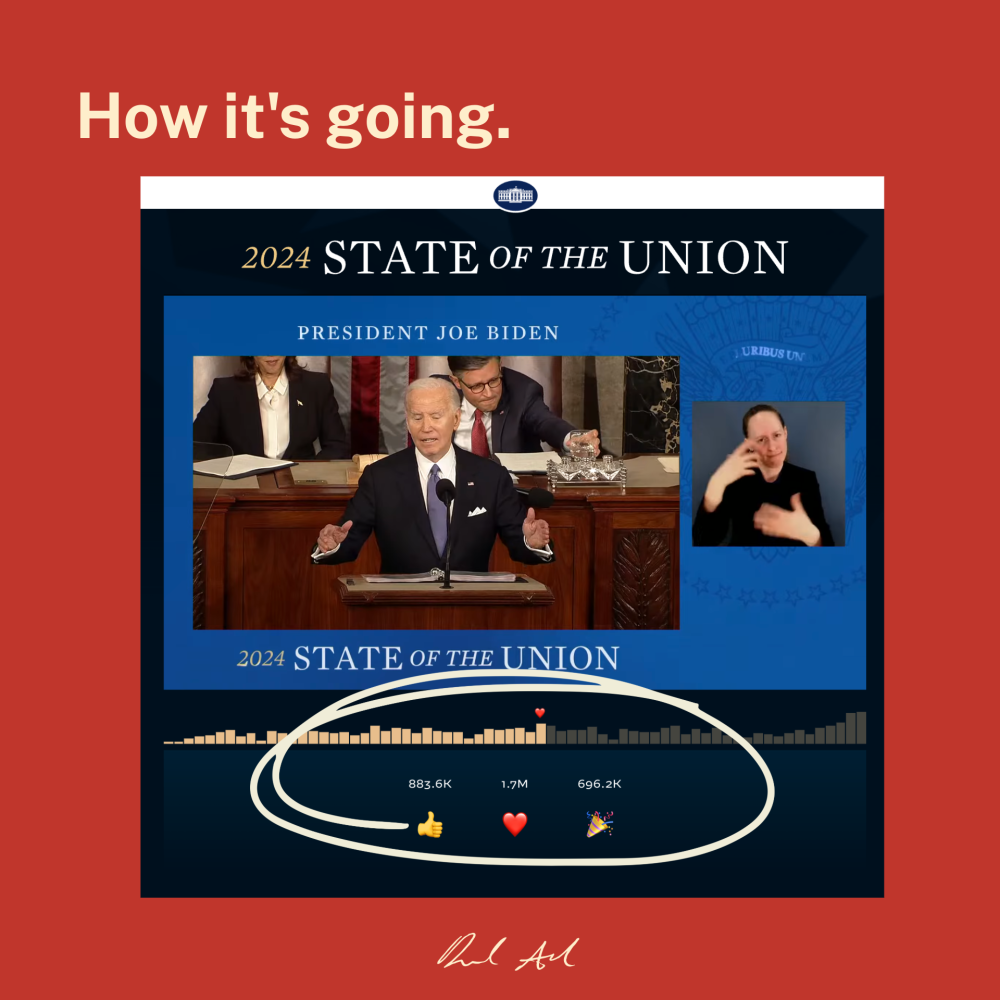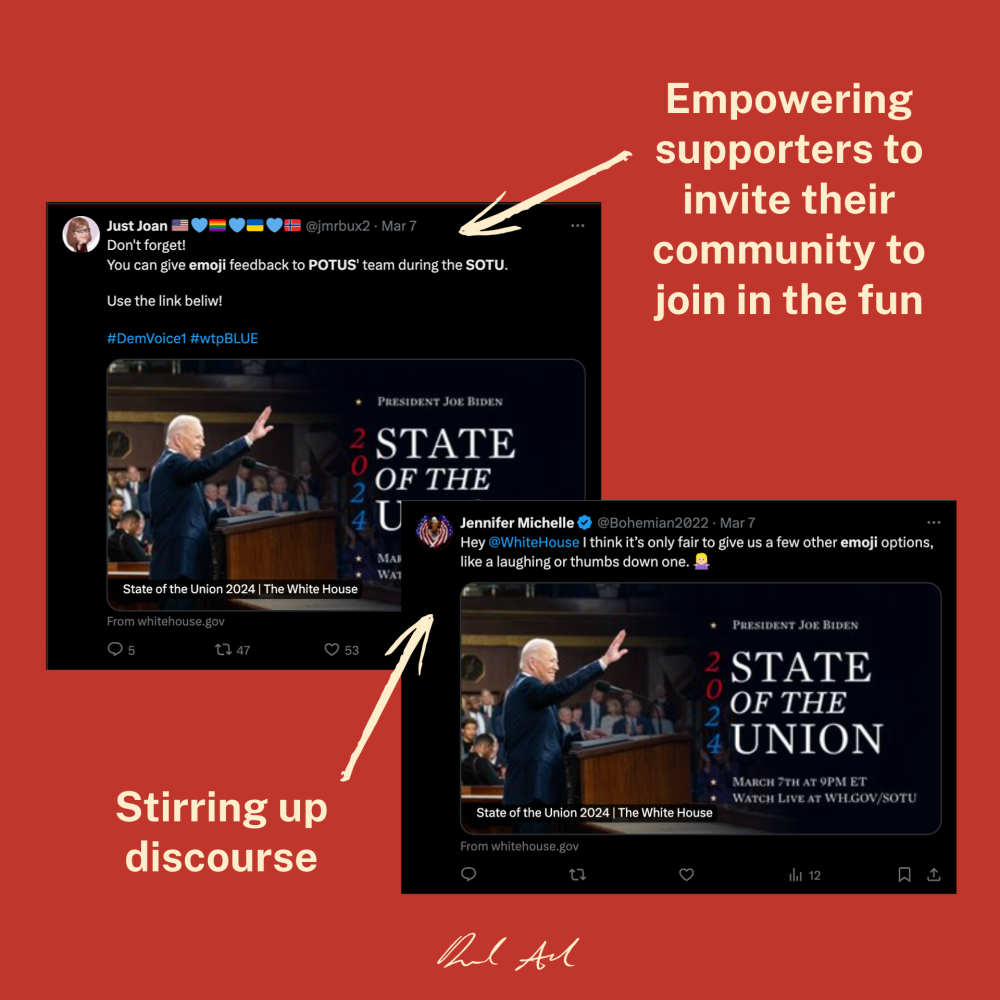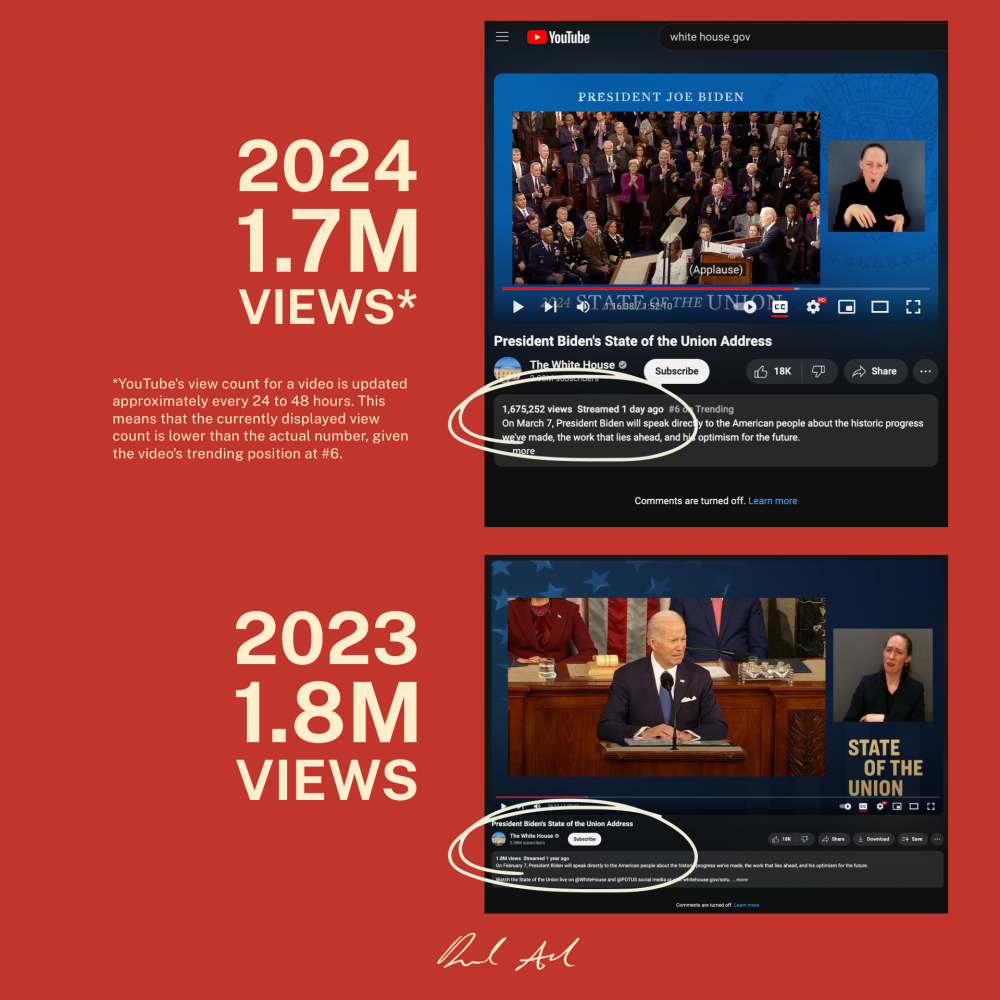During the 2024 State of the Union (SOTU) address, the White House implemented a smart, impactful and elevated digital engagement strategy that proved successful.
Before the SOTU (welcome back!), I alerted my LinkedIn community with a spot-on analysis of the strategy.

In summary, their digital engagement approach utilized a simple, positive-only emoji system, allowing viewers to watch the live stream and engage with the speech by clicking or tapping on one of three available emojis: 👍 💖 🎉
Over the past decade, I've organized more than 75 events, and several have been live-streamed. Every event is an opportunity to tell a story with your community: Beginning, middle and end. And well-resourced events that can support live-streaming and digital engagement provide a way to tell that story with data in powerful new ways. This data helps shape the narrative of the success of key events.
Indeed, the data gathered during the live stream provided insights into viewer reactions, highlighting high and low points of engagement throughout the speech. This allowed the White House to analyze the impact of the address on various segments of the audience. It also creates a compelling reason to revisit the SOTU address even today at WhiteHouse.gov.

This strategy could be further explored by incorporating more interactive elements, such as polls, live chats, or even video editing to share favorite clips and memes on social media, to gather even more detailed insights and keep viewers engaged.
Stirring up social media engagement
Interestingly, the emoji-only interaction strategy mobilized Twitter users on both sides of the political spectrum increasing the reach and visibility of the SOTU address. While those on the right expressed frustration about the limited emojis in their community, the President's supporters rallied their followers to participate in the emoji rating fun.

This approach could be expanded by incorporating more emoji choices around the issues, for example, 🇮🇱 and 🇵🇸 emojis would mobilize specific segments of the audience around a top politically debated issue and drive further engagement.
More views, longer viewer engagement
📈 By offering an interactive activity, the White House had a reason to promote watching the live stream on their website (where they get to control the experience versus YouTube) and successfully kept viewers engaged for a more extended period, encouraging them to stay connected. SOTU is still earning views by providing value through an interactive sentiment analysis tool.
The 2023 SOTU has 1.8M views, while about 36 hours later, the 2024 SOTU has already reached 1.7M views. And don't forget: YouTube's view count for a video is updated approximately every 24 to 48 hours. This means that the currently displayed view count is lower than the actual number, given the video's trending position at #6.
Update (March 12, 2024): Current YouTube views at 1,875,261.

📍 Granular location information: The strategy likely captured IP addresses, offering valuable data on where the President's message resonated in the U.S. and around the world.
📩 Email list growth: The strategy might have also expanded the email list, as scrolling viewers might have opted to "Stay Connected" for future updates. As I noted earlier, empowering advocates to invite their friends to join in the fun increased audience reach.
😎 Appeal to a younger audience: The use of emojis might have successfully attracted a more youthful demographic, making the SOTU address more accessible and engaging for a broader audience.
Subtle, Elevated and Impactful
In my opinion, the White House's emoji-focused digital engagement strategy during the SOTU address demonstrated a clear understanding of audience-first storytelling.
By utilizing positive-only emojis, they effectively captured real-time sentiment in a controlled environment, expanded their email list, and engaged viewers longer.
The approach also sparked social media discussions on both sides of the political spectrum, making the SOTU more accessible and engaging for a broader audience.
Overall, the emoji strategy proved to be a successful example of modern political communication and audience engagement.
